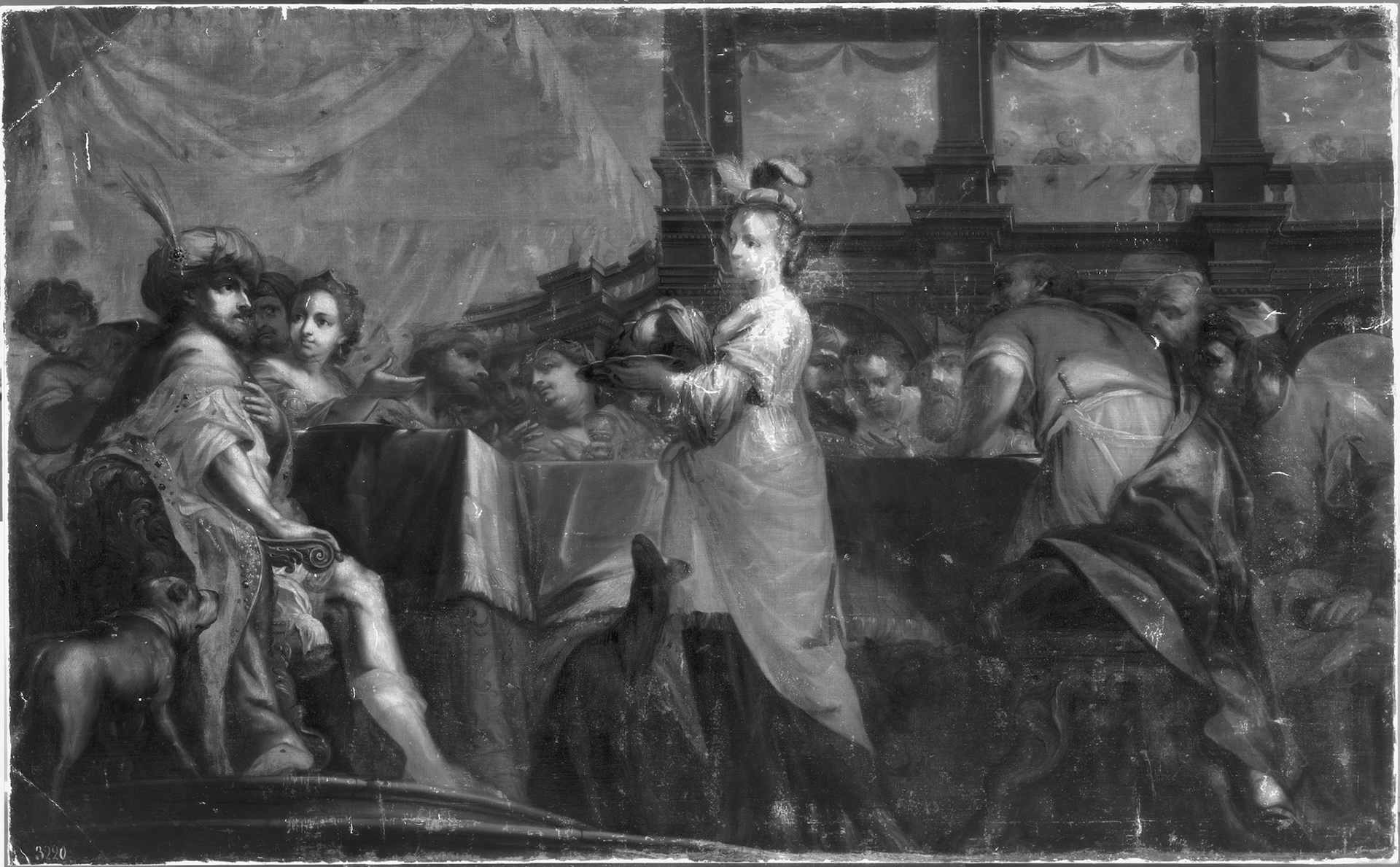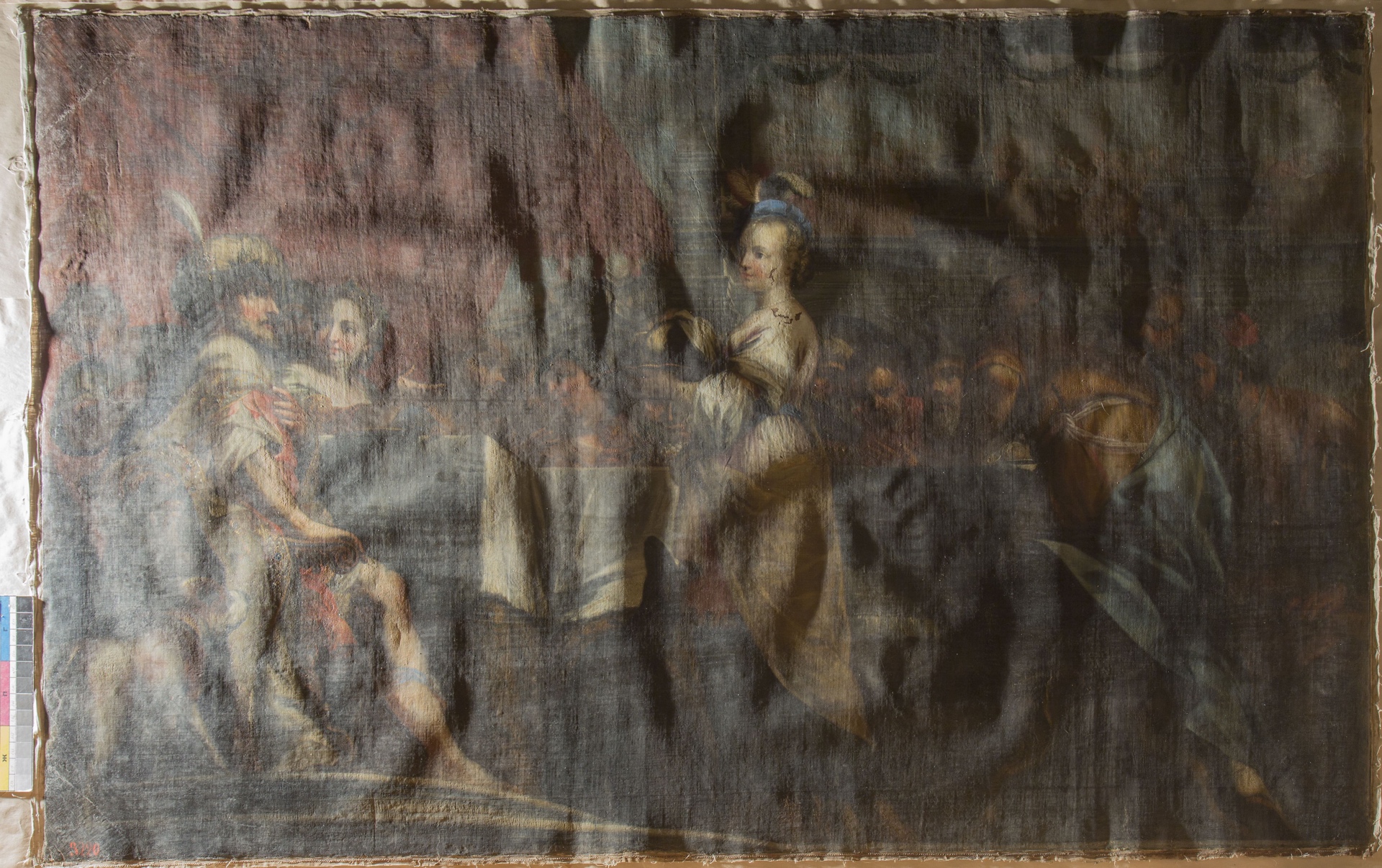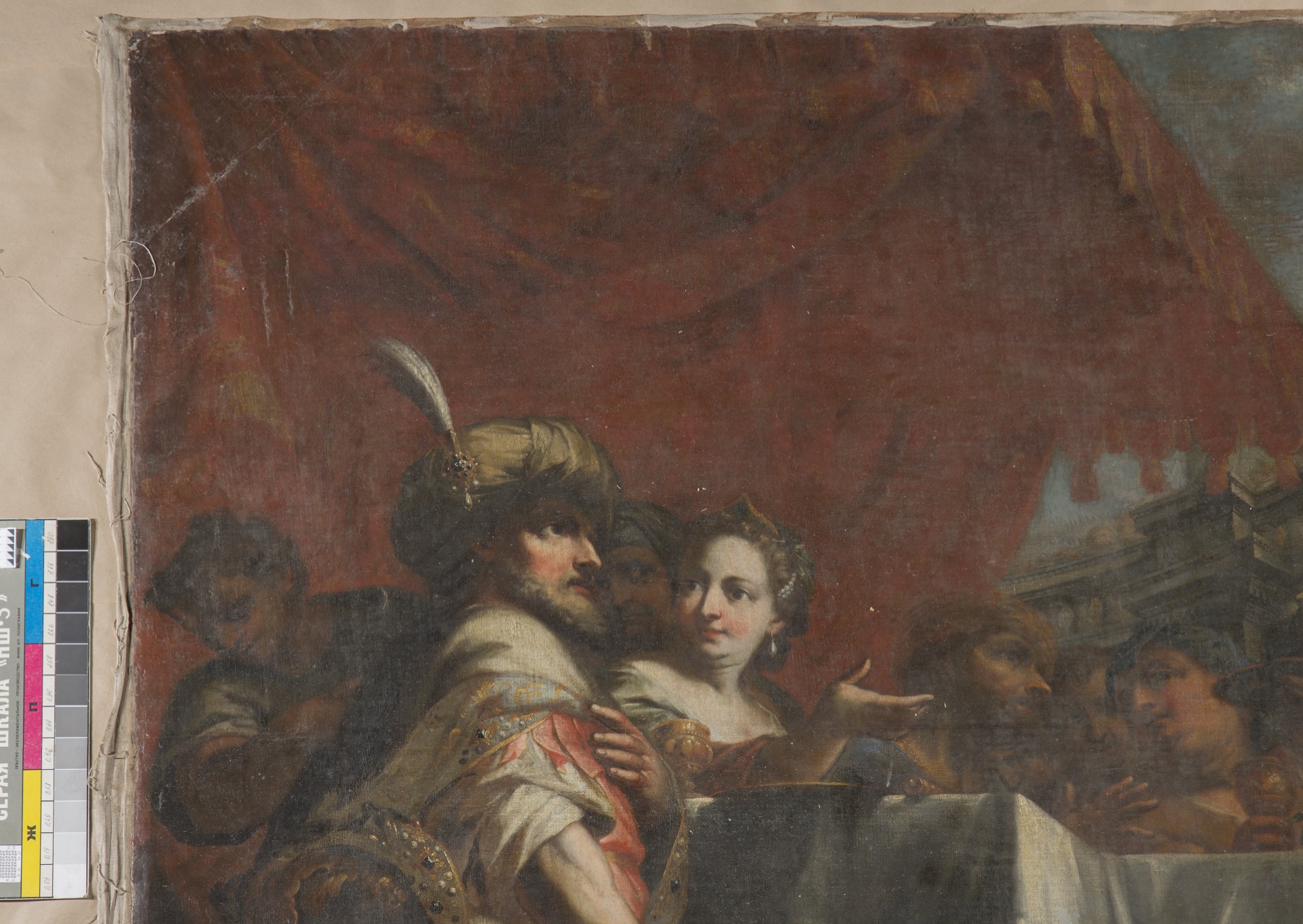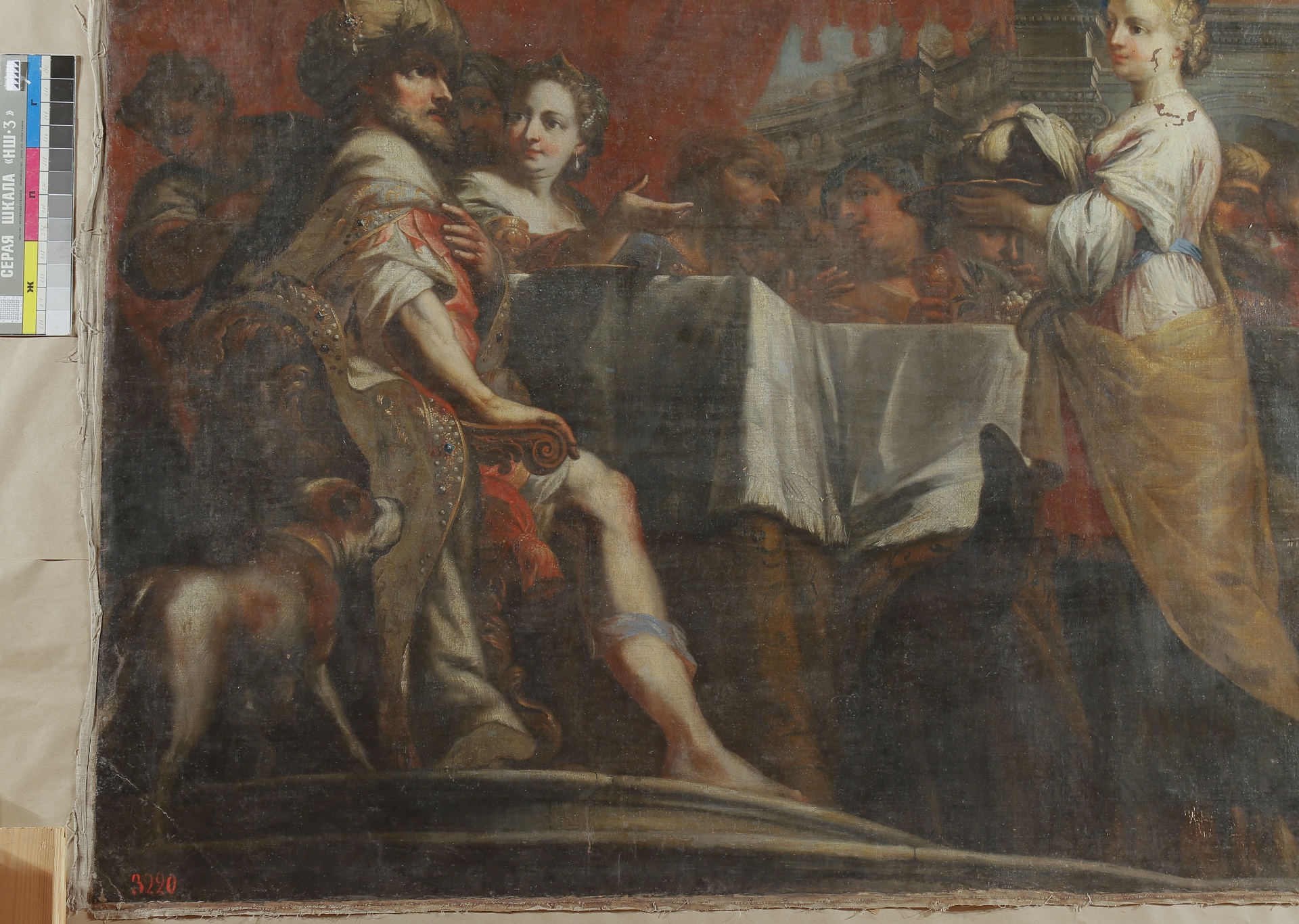Project for the restoration of Silvestro Manaigo’s painting Herod’s Feast
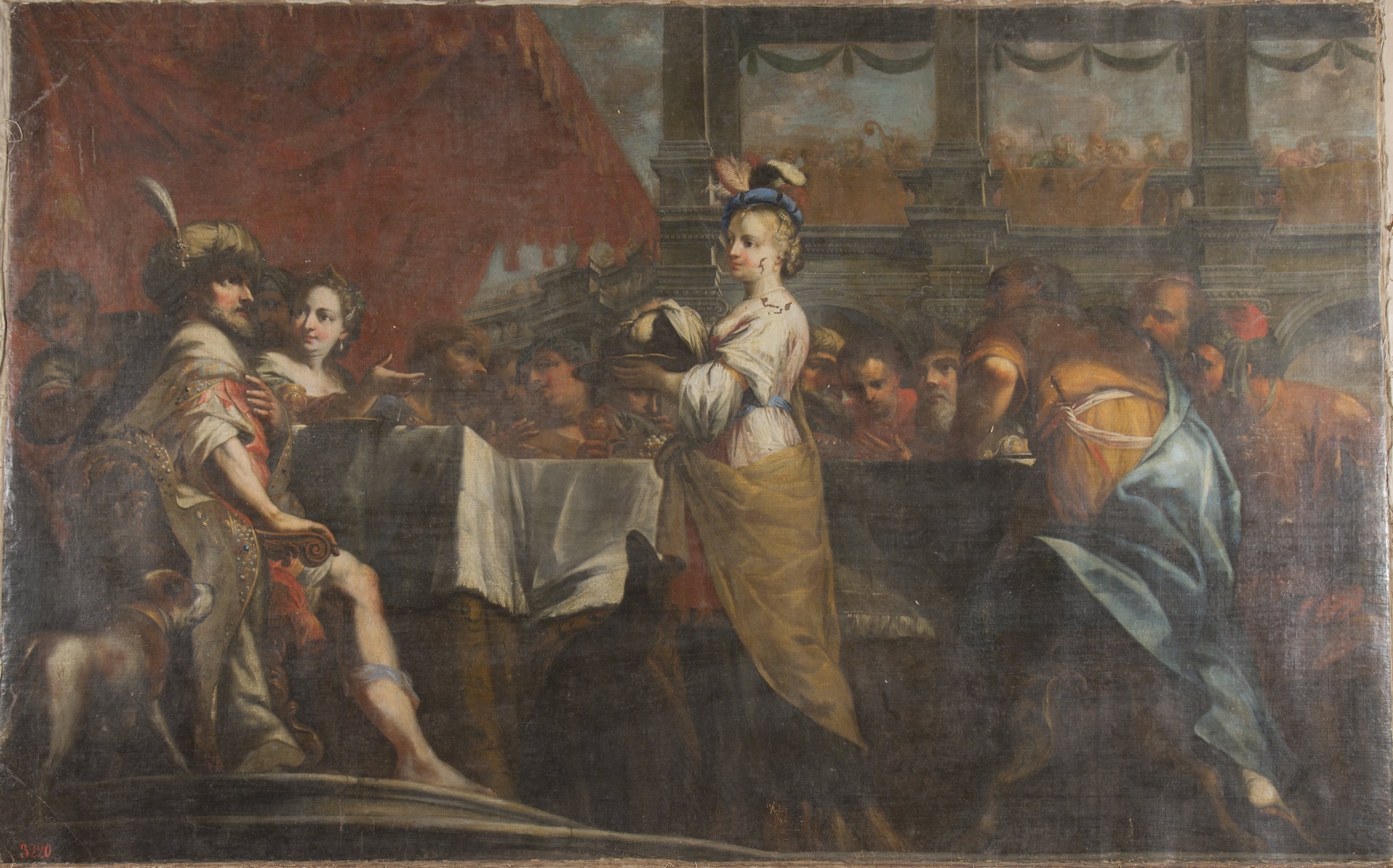
The monumental painting of Herod’s Feast came into the collection of the State Hermitage in 1923, from the Museum of the Academy of Arts, to which it had previously been transferred from the Oranienbaum palace back in 1765.
History of the Painting
A study of the origins of the painting takes us to Oranienbaum and the picture gallery of Grand Duke Piotr Feodorovich, who later briefly became Emperor Peter III. His personal collection of paintings – among the first large ones in Russia – was put together with the active involvement of Jacob Stählin, in whose Memoirs one can find not only mentions of many works that came into that collection, but also the sources from which they were acquired. Herod’s Feast numbered among the Grand Duke’s earliest acquisitions and came from a consignment of pictures that were brought from Venice in 1746 by Baron Diego Bodissoni. Until the construction of the “Picture House”, the work was kept in the Summer Palace in Saint Petersburg, from where it was sent to Oranienbaum (in the summer of 1757) as one of 33 pictures. It is recorded as “1 large painting, 3 arshins and ½ a vershok in height, 5 arshins and 2 vershoks in breadth, depicting Herod’s feast and the beheading of John the Baptist, painted to a high standard, in a narrow gilt frame that has been dismantled” (K.V. Malinovsky, The History of the Collecting of Paintings in Saint Petersburg in the 18th Century [in Russian], Saint Petersburg, 2012. p. 116).
After Catherine II took the throne, Herod’s Feast was given in 1765 to the Academy of Arts, as one of 44 paintings from the Empress. We note that the canvas is associated with the name of the engraver Pietro Monaco, who brought out a Collection of 112 Engravings with Scenes from Holy Scripture in Venice in 1741. That series of prints was republished several times and became widely known in Europe.
The painting of Herod’s Feast remains unknown to art critics to this day. Its restoration and introduction into scholarly circulation should become a significant event, particularly considering that it was created at the turn of the 18th century, as hardly anything is known about that period in Silvestro Manaigo’s career. Thus, thanks to fresh research and the restoration of Herod’s Feast, we can broaden our knowledge of Manaigo’s talent and his contribution to Venetian art.
The painting’s subsequent return to the historical display in the Picture House at Oranienbaum will be a logical outcome and a vivid illustration of the initial stage in the creation of art galleries in Saint Petersburg.
State of Preservation
After removal from its roller, the canvas displays strong buckling in the centre due to the edges drying out. The painting was previously backed with a second canvas that has become separated from it in many places, especially at the edges. There is an extension to the canvas in the upper left-hand corner. Cracking of various types can be seen, as well as losses of the paint layer and primer across the whole visible surface, particular at the edges of the canvas. There are extensive areas of overpainting and numerous instances of restoration tinting. The varnish coating has darkened, become clouded and decomposed. The deformation of the support and the state of the surface layers hinder an aesthetic perception of the depiction as a whole.
Urgency of the Project
The painting spent a long time on a roller in the storerooms of the State Hermitage, inaccessible for viewing and study. For purposes of museum display, the need for restoration measures to preserve the painting has become pressing. Modern-day multidisciplinary study of the materials and technique would be timely and worthwhile.
On assignment from the State Hermitage’s Restoration Commission, the decision has been taken to carry out measures for multidisciplinary study, a complete reduction of the thickness of the layers of varnish and removal of later overpainting. The state of preservation prevents the unconstrained storage and display of a work that is exceptional in terms of its subject and painterly merits. The restoration project is the implementation of an initiative to restore a work of art and return the painting to a museum display.
The project envisages the following restoration measures:
- A range of physical and chemical laboratory studies
- Photographic recording of the process
- Removal of persistent surface grime
- Reglueing the places where the canvases have separated
- Reinforcement of the primer and painted layer across the entire surface
- Addition of restoration edgings
- Preparation of a restoration stretcher
- Stretching the picture on the new stretcher
- Making good the losses of primer
- Removal of later overpaintings and reduction of the thickness of the varnish
- Application of fresh varnish and making good the losses in the painting
A working group for the restoration of the painting has been formed from the staff of the State Hermitage:
Scholarly supervisor – I.S. Artemyeva, leading researcher in the Department of Western European Fine Art
Project co-ordinator – Ye.V. Feodorov, head of the Project Finance Sector
Project curator – V.A. Korobov, head of the Laboratory for the Scientific Restoration of Easel Paintings
Artist-Restorer – P.A. Davydov.
